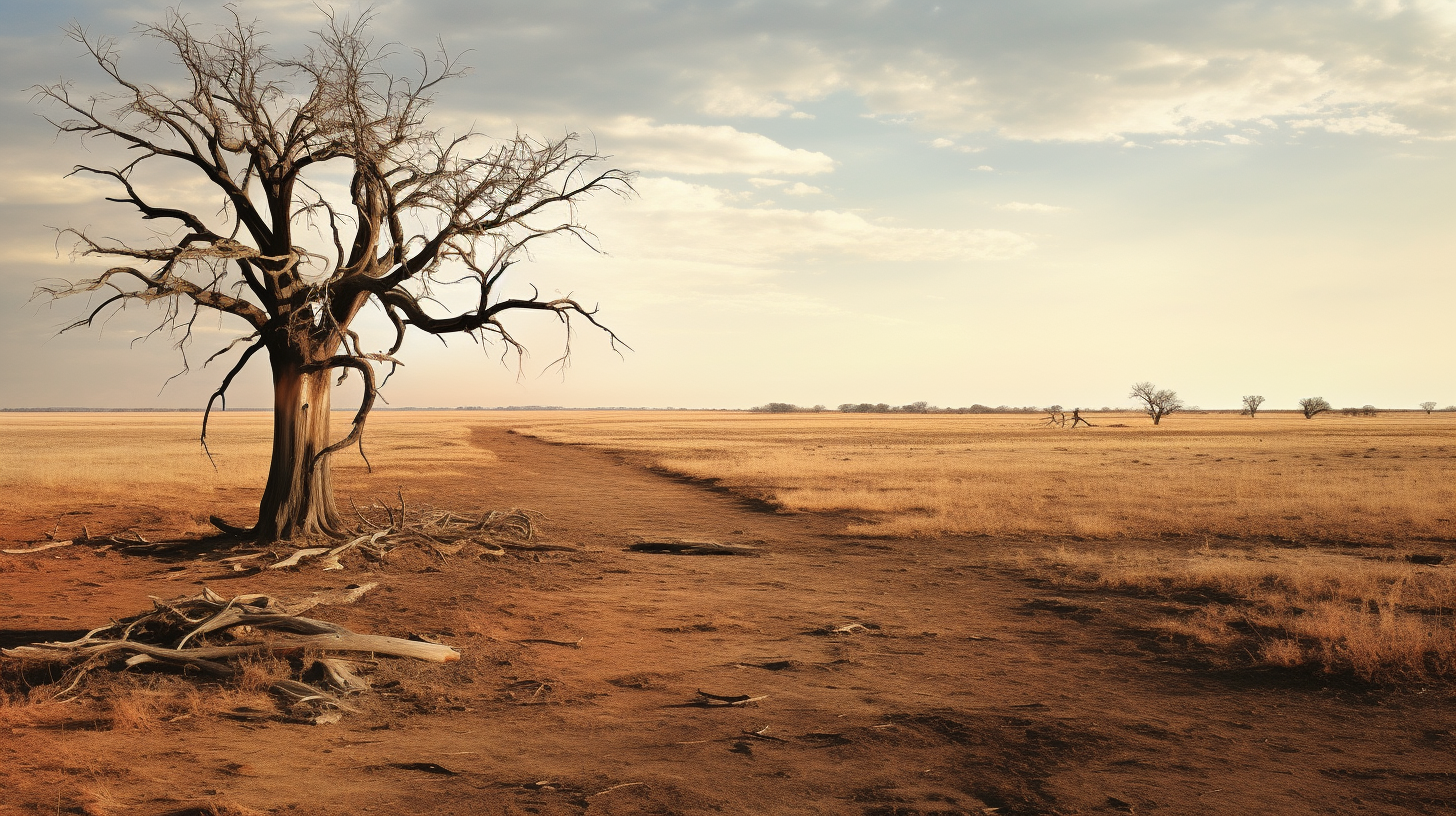The savannah—a vast tapestry where the dance of life was once choreographed by the elements—now stands still, void of the roar and the rumble. Here in the relentless embrace of an arid dystopia, the ground cracked and the horizons eerily silent, we find nature’s canvas scrubbed of its biodiversity, a portrait of loss painted in the gloom of environmental demise.
Where the Wild Once Lived
The Savannah, a cradle of biodiversity, once thrived with a multitude of species, all perfectly tuned to the rhythm of the wild. But not anymore. The devastating effects of climate change and human intrusion have turned the stage of the surreal into a scene of desolation. Vast swathes of dry, cracked earth, where the memory of grasslands barely lingers, mark the territory where life once roamed unbounded.
A Symphony Silenced
The cacophony of nature’s sounds has been muted. No lion’s roar punctuates the twilight, no herds of buffalo kick dust into the dawn sky. Instead, one finds oneself straining to hear something, anything that resembles the vitality that was. Elephants, giraffes, zebras — iconic giants and diligent grazers alike have either migrated, adapted, or perished.
The Human Echo
Local tribes who once coexisted with these creatures, who listened to and learned from the patterns of the plains, now wander in search of a past that slips through their fingers like the few drops of water they yearn for. Their knowledge, traditions, and stories—once drenched with the essence of the wild—now echo a desperate struggle for survival, a testament not just to a changing ecosystem, but to a changing world.
Ghosts of the Past
The ghosts of what were once vibrant communities of life can be found in the remnants, the abandoned nests, the skeletons half-buried in the sunbaked soil. They too tell a story, a morbid anthology of a life that the world thought would endure. Scientists study these remains, piecing together the puzzle of the past while simultaneously lamenting the statistics that now spell a future of scarcity and desolation.
The Climate Culprit
Climate change, undoubtedly the main antagonist in this tragic saga, has reshaped not just the savannah, but whole ecosystems around the globe. Drastic fluctuations in weather patterns, prolonged droughts followed by intense floods, and the ever-increasing encroachment of human activity have sealed the fate of once-lush landscapes. The savannah, much like the newfound deserts mentioned in a prior article regarding the ‘Survivors of the Sand Sea’, bears the hallmarks of a planet in distress.
What these plains plead for is understanding, not just in the scientific sense, but in the human one. It is a plea for remembrance, for what was once the tapestry of life should not fade into obscurity, uncaptured and unmourned.
A Call to the Silence
Indeed, what remains in the hush of the empty plains is a call—a call that should resonate within the conscience of humankind. It is not a call of hope, for the savannah’s shroud has been woven too tight for redemption, but one of reflection and urgency. As the ghosts of the Savannah linger, so should the lessons they impart.
The future may not rewrite the desolate present of these plains, but it should steer away from the path that led here. In the silence of the savannah, let us listen to the echo of its former life and ensure that such echoes don’t become the definitive narrative of our natural world.
